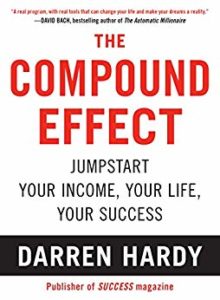In this lesson, we are going to talk about priorities. A few lessons ago, we talked about Darren Hardy’s morning routine. The guy is a machine, and what he does is worth reviewing again in light of our topic.
Before getting out of bed, he:
- Wakes at 5 AM
- Thinks about that for which he is grateful.
- Considers his number one goal for the day
Before settling into his morning routine, he:
- Makes coffee
- Completes his stretching routine
Before planning his day, he:
- Reads motivational literature for 30 minutes
- Works on his most important project for an hour of focused time (Before opening email)
Before beginning his work day, he:
- Completes his calibration appointment (15 minutes)
- Reviews top three one-year goals
- Reviews top three five-year goals
- Reviews quarterly objectives
- Reviews top goal for month
- Reviews top goal for the week
- Sets his top three Most Valuable Priorities (MVPs) for the day.[1]
At this point, he begins his working day.
Priorities
In the other lesson, we focused on Hardy’s amazing routine. Here, we want to focus on priorities. After starting the day like this, do you think that he is easily distracted from his goals for the day? If you asked him to take on another task that did not fit his goals, how likely is it that he would be lured away?
Now, ask yourself similar questions:
- How focused are you on your priorities?
- If you stay on your major priority for the day, when does this focus start? When you get to work or hours before?
- If you have a major priority for the day, are you aligned with weekly, monthly, quarterly, and yearly goals? If not, you may be successful today, but you may still be far off course in relation to your long-term goals.
We talk a lot about priorities (plural), but I recently read that the plural of priority (priorities) wasn’t even a word that would’ve made sense in colonial America. A priority is something that must come first. If you have a dozen priorities, you effectively have none. The plural of the word isn’t even in Webster’s 1828 American Dictionary of the English language.
At this point you might be thinking that you have to have more than one priority. After all, you are a whole person with work and family obligations. That’s fair enough. But if you’re operating with more than a few priorities you’ve diluted your focus, and this may be a key to your lack of productivity.
In Eat that Frog!, Brian Tracy explains that if you have priorities, by definition, other things must not be priorities. He wrote:
Here is a key point. To set proper priorities, you must set posteriorities as well. A priority is something that you do more of and sooner, while a posteriority is something that you do less of and later, if at all.
One of the most powerful of all words in time management is the word no! Say it politely. Say it clearly so that there are no misunderstandings. Say no graciously but firmly to avoid agreeing to something against your will. Say it early and say it often. Remember that you have no spare time. As we say, “Your dance card is full.”[2]

What About You?
Do you know your priorities? Are you focused on them? Are they aligned? What must you say no to in order to say yes to that which really matters to you?
References
[1] Hardy, D. (2010). The Compound Effect. New York: Vanguard Press.
[2] Tracy, B. (2007). Eat that frog! : 21 great ways to stop procrastinating and get more done in less time. San Francisco : Berrett-Koehler Publishers. (p. 34).
___________

Dr. Darin Gerdes is a tenured Professor of Management in the College of Business at Charleston Southern University.
All ideas expressed on www.daringerdes.com are his own.
This post was originally created for Great Business Networking (GBN), a networking organization for business professionals where Dr. Gerdes is the Director of Education.
___________

